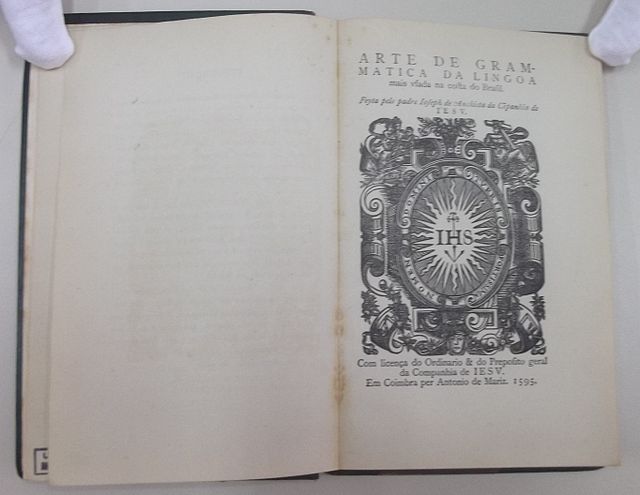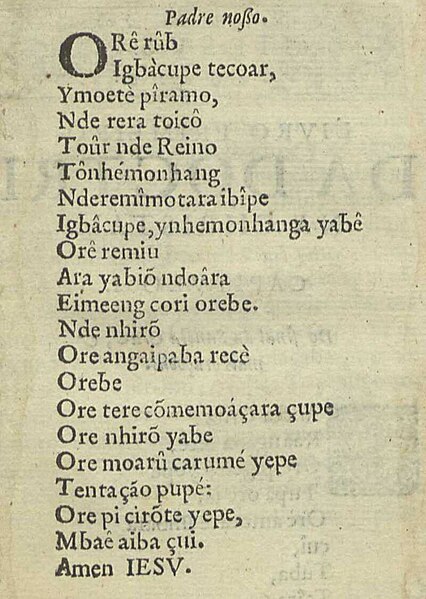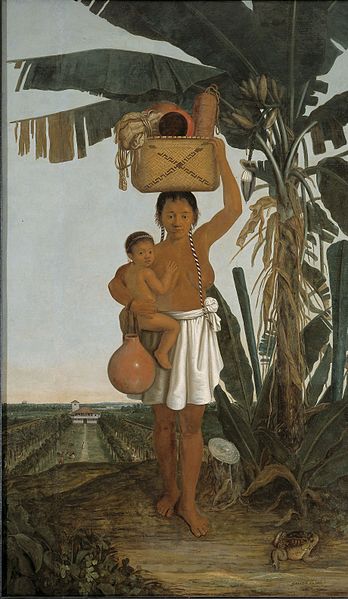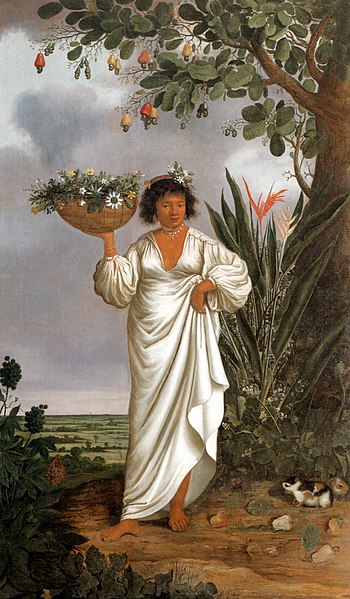Old Tupi, Ancient Tupi or Classical Tupi is a dead Tupian language which was spoken by the aboriginal Tupi people of Brazil, mostly those who inhabited coastal regions in South and Southeast Brazil. In the words of Brazilian tupinologist Eduardo Navarro, "it is the classical indigenous language of Brazil, and the one which had the utmost importance to the cultural and spiritual formation of the country".
Joseph of Anchieta (1534–1597), the first grammarian of Tupi, as envisioned by Antônio Parreiras
Facsimile of the Art of Grammar of the Most Used Language on the Coast of Brazil
Although the martial art is of African origin, the word "capoeira" comes from Tupi, more precisely from ka'a-pûer-a, which means "forest that was". Painting by Johann Moritz Rugendas (1835)
The Lord's Prayer as in the Catechism in the Brasílica Language (1618)
The Tupi people, a subdivision of the Tupi-Guarani linguistic families, were one of the largest groups of indigenous peoples in Brazil before its colonization. Scholars believe that while they first settled in the Amazon rainforest, from about 2,900 years ago the Tupi started to migrate southward and gradually occupied the Atlantic coast of Southeast Brazil.
Albert Eckhout's painting of the Tupi
Image: India tupi
Albert Eckhout: a mixed-race (Mameluco) woman (circa 1641–1644)
A Tupiniquim chief (Cacique) in Brasília, 2007








